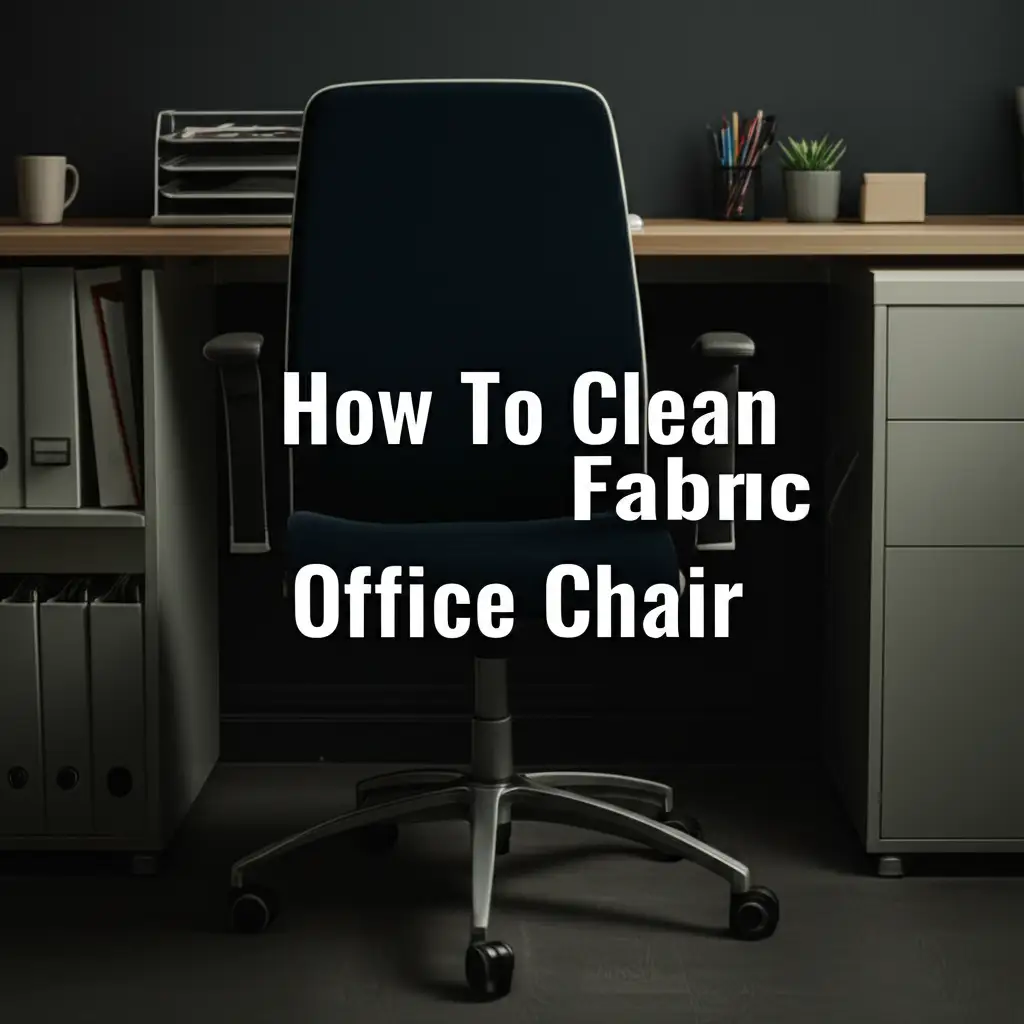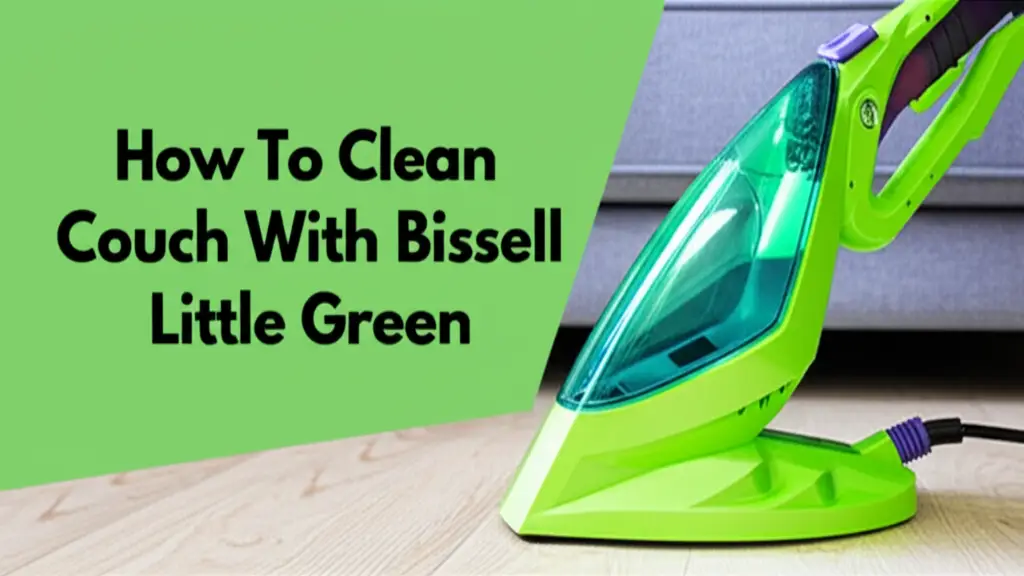· Home Cleaning · 16 min read
How To Clean Fabric Office Chair

Revive Your Office Chair: How to Clean Fabric
Your office chair serves as a central point in your workspace. You spend many hours sitting there. Over time, fabric office chairs collect dirt, dust, crumbs, and spills. This buildup not only makes your chair look bad but also creates an unhealthy environment. Learning how to clean a fabric office chair helps you keep your workspace fresh. It also extends the life of your chair.
This comprehensive guide will walk you through every step. We cover initial preparation and understanding fabric types. You will learn about effective spot cleaning and thorough deep cleaning methods. We also include tips for proper drying and ongoing maintenance. Get ready to transform your chair and create a cleaner, more inviting office space.
Takeaway
- Identify your chair’s fabric cleaning code before you begin.
- Always vacuum your chair thoroughly as a first step.
- Spot clean spills immediately to prevent deep stains.
- Use the correct cleaning method (water-based or solvent-based) for your fabric.
- Ensure your chair dries completely to avoid mold or mildew.
To effectively clean a fabric office chair, first check its care tag for the cleaning code (W, S, WS, or X). Then, vacuum the entire chair to remove loose dirt. Spot clean any stains using appropriate cleaners based on the fabric code. For deep cleaning, use a water-based solution for “W” or “WS” codes, or a solvent for “S” codes. Always allow the chair to dry completely.
Why a Clean Fabric Office Chair Matters
A clean office chair goes beyond just looking good. It plays a big role in your health and comfort. Think about how much time you spend sitting in your chair. Dirt, dust, sweat, and food particles settle into the fabric.
These invisible things create a breeding ground for germs and allergens. A dirty chair can contribute to respiratory issues or skin irritation. Keeping your chair clean helps you breathe easier. It also promotes better overall hygiene in your office.
A clean chair makes your workspace feel more inviting. It boosts your mood and productivity. When your environment is tidy, you feel more focused. A neat chair also shows professionalism to others who might visit your office. It creates a positive impression.
Regular cleaning also extends the lifespan of your office chair. Dirt and grime can break down fabric fibers over time. This leads to wear and tear. A well-maintained chair lasts longer. This saves you money in the long run. Cleaning your office chair is an investment in your health, productivity, and your furniture.
Essential Tools for Cleaning Your Fabric Office Chair
Before you start cleaning your fabric office chair, you need to gather the right supplies. Having everything ready makes the process smoother and more efficient. The right tools ensure you clean effectively without damaging your chair. I always make sure I have my full arsenal ready before I tackle any cleaning project.
First, you will need a vacuum cleaner. A handheld vacuum is ideal, or you can use your regular vacuum with brush and crevice attachments. These attachments help reach all the tight spots. You also need several clean microfiber cloths. These cloths are great for blotting and wiping. They absorb liquid well.
Next, prepare your cleaning solutions. You might need a spray bottle. For general cleaning, a mild liquid dish soap mixed with warm water works well. You can also use a dedicated upholstery cleaner. Always read the instructions on commercial cleaners. White vinegar is another versatile cleaner; it helps with odors and some stains. Baking soda is excellent for absorbing smells and oils.
You may also need a soft-bristled brush. This helps agitate the fabric gently. Paper towels are useful for soaking up excess moisture. Finally, think about safety. Wear rubber gloves to protect your hands from cleaning solutions. Ensure good ventilation in your cleaning area. Open windows or use a fan. These simple tools will help you achieve a truly clean fabric office chair.
Understanding Your Fabric Office Chair’s Care Tag
The most important step before you clean your fabric office chair is to find and understand its care tag. This small tag is usually located on the underside of the seat cushion or on the chair’s frame. It provides vital information about how to clean your specific fabric. Ignoring this tag can lead to damage, discoloration, or permanent stains. I always check this tag first, no matter what I am cleaning.
Care tags use specific codes. These codes tell you which cleaning agents are safe. Here are the common codes and what they mean:
- “W” (Water-Based Cleaners): This code means you can safely use water-based cleaning solutions. These include mild soap and water, or water-based upholstery shampoos. Most household fabric office chairs fall into this category.
- “S” (Solvent-Based Cleaners): This code indicates that you must use only solvent-based cleaners. Water will likely cause stains or damage the fabric. These cleaners are often called “dry cleaning solvents.” They evaporate quickly without leaving a residue.
- “WS” (Water or Solvent-Based Cleaners): This is a flexible code. You can use either water-based solutions or solvent-based cleaners. This gives you more options for cleaning your chair.
- “X” (Vacuum Only): This code means no liquid cleaners should touch the fabric. You can only clean the chair by vacuuming. If you have an “X” code chair, consult a professional for any stain removal.
If your chair does not have a care tag, or if you cannot read it, always proceed with caution. Test any cleaning solution on an inconspicuous area first. This could be the back of the chair or underneath the seat. Apply a small amount, let it dry, and check for any adverse reactions. This simple test prevents bigger problems. Proper understanding of your care tag is crucial for effective and safe cleaning of your fabric chair seats.
Pre-Cleaning Your Fabric Office Chair: The First Steps
Starting your cleaning process with the right preparation makes a huge difference. This initial phase removes loose dirt and debris. It prevents these particles from becoming mud when you apply liquid cleaners. I always begin with a thorough pre-clean. This sets the stage for a truly deep clean of my fabric office chair.
Your first step is a thorough vacuuming. Use your vacuum cleaner with the appropriate attachments. The brush attachment is excellent for lifting dust and crumbs from the main fabric surfaces. Go over the entire chair, paying close attention to areas where dirt accumulates. These include the seat, backrest, and armrests.
Next, switch to the crevice tool. This narrow attachment allows you to reach into tight spots. Get into the seams, under the seat cushion, and around the chair’s base. You will be surprised how much dust and debris hide in these areas. Vacuuming removes pet hair, food crumbs, and general household dust. This step prevents these items from being pushed deeper into the fabric during wet cleaning.
After vacuuming the fabric, take a moment to wipe down the hard surfaces of your chair. Use a damp cloth to clean the armrests, chair base, and wheels. Dust and grime can build up here too. Cleaning these parts first ensures that dirt from them does not transfer back onto your freshly cleaned fabric. This preparatory work is essential for a truly clean outcome.
Finally, prepare your cleaning area. Move the chair to a well-ventilated space. Lay down old towels or a plastic sheet under the chair. This protects your floor from any drips or spills during the cleaning process. These simple pre-cleaning steps ensure your main cleaning effort is as effective as possible.
Effective Spot Cleaning for Fabric Office Chair Stains
Stains happen. Coffee spills, pen marks, or food splatters are common on a fabric office chair. Effective spot cleaning can save your chair from permanent damage. The key is to act quickly. Fresh spills are much easier to remove than old, set-in stains. I try to tackle spills the moment they happen.
When a spill occurs, do not rub it. Rubbing pushes the stain deeper into the fabric fibers. Instead, blot the stain gently with a clean, dry cloth or paper towel. Start from the outside of the stain and work your way in. This prevents the stain from spreading further. Continue blotting until you have absorbed as much liquid as possible.
For general food and drink stains on “W” or “WS” coded fabrics, mix a small amount of mild liquid dish soap with warm water. Dampen a clean microfiber cloth with this solution. Gently blot the stained area. Do not over-wet the fabric. Rinse your cloth frequently with clean water and continue blotting until the stain lifts. Then, blot the area with a clean, damp cloth to remove soap residue.
Grease or oil stains require a different approach. First, sprinkle a generous amount of baking soda or cornstarch directly onto the stain. Let it sit for at least 15-30 minutes. The powder will absorb the oil. Then, vacuum up the powder. Follow up with a mild soap and water solution if any residue remains. For tougher stains or those on “S” coded fabrics, you might need a specialized upholstery cleaner or a dry cleaning solvent. Remember to test any new product in an inconspicuous area first. This step is critical, just like when cleaning dirty fabric luggage.
Ink stains can be tricky. For these, rubbing alcohol often works well. Apply a small amount of rubbing alcohol to a clean cloth. Gently blot the ink stain. Be very careful not to spread the ink. Always test alcohol in a hidden area first, as it can sometimes affect fabric colors. Removing stains effectively keeps your fabric office chair looking its best. For situations where water might not be suitable, you can also consider techniques similar to how to clean a fabric sofa without water for certain stubborn marks.
Deep Cleaning Methods for Your Fabric Office Chair
After spot cleaning and vacuuming, a deep clean revitalizes your entire fabric office chair. The method you choose depends on your chair’s care tag. Using the wrong method can damage the fabric. Always refer back to your “W”, “S”, or “WS” code. I prepare thoroughly before I deep clean my furniture.
Water-Based Deep Cleaning (for W and WS Codes)
If your chair has a “W” or “WS” code, you can use water-based cleaning solutions.
- Prepare Your Solution: Mix a small amount of mild liquid dish soap or a dedicated fabric upholstery cleaner with water according to product instructions. Pour it into a spray bottle.
- Apply the Cleaner: Lightly mist a section of the fabric. Do not saturate the material. Over-wetting can lead to mold, mildew, or damage to the chair’s padding.
- Gently Scrub: Use a soft-bristled brush or a clean microfiber cloth. Gently work the cleaner into the fabric in small, circular motions. Focus on areas with visible dirt or general grime.
- Wipe and Rinse: After scrubbing a section, use a separate clean, damp cloth to wipe away the cleaner and dirt. Rinse this cloth often in clean water. Continue wiping until no more suds or dirt come off. Work in sections across the entire fabric surface.
- Repeat if Needed: For heavily soiled chairs, you might need to repeat the process. Always ensure you are not saturating the fabric.
Solvent-Based Deep Cleaning (for S Codes)
For chairs with an “S” code, you must use a dry cleaning solvent. Water will stain or damage these fabrics.
- Ensure Ventilation: Open windows and doors. Solvents produce strong fumes.
- Apply Solvent: Do not spray the solvent directly onto the chair. Instead, apply a small amount of the specialized dry cleaning solvent to a clean, white cloth.
- Blot the Fabric: Gently blot the fabric surface with the solvent-dampened cloth. Work in small sections. The solvent will lift the dirt and evaporate quickly.
- Change Cloth Frequently: Use fresh parts of your cloth, or switch to a new cloth as it becomes soiled. This prevents redepositing dirt. This method is effective for maintaining delicate fabrics that cannot handle water, much like the approach needed for certain types of fabric sofas where water is avoided.
X Code (Vacuum Only)
If your chair has an “X” code, avoid all liquid cleaners. Your only option for deep cleaning is thorough vacuuming. Use strong suction and appropriate attachments to remove as much dirt as possible. For significant stains on “X” coded fabric, consult a professional upholstery cleaner. Deep cleaning, when done correctly, will greatly improve the appearance and freshness of your fabric chair seats.
Drying and Finishing Your Clean Fabric Office Chair
After deep cleaning your fabric office chair, proper drying is crucial. This step prevents common problems like mold, mildew, and unpleasant odors. If the fabric stays wet for too long, it can also damage the chair’s internal components. I always make sure my cleaned items are completely dry before putting them back into use.
Your main goal is to promote air circulation.
- Increase Airflow: Open windows in the room. Turn on a ceiling fan or use a portable fan directed at the chair. This helps air move around and speeds up the drying process. Do not cover the chair while it dries.
- Avoid Direct Heat: Do not use a hairdryer or direct heat sources to speed up drying. High heat can shrink or damage certain fabric types. It can also set any remaining stains.
- Pat Dry (Optional): If the chair is still quite damp after cleaning, you can gently pat the surface with clean, dry towels. Press firmly to absorb excess moisture. Change towels as they become damp.
Drying time varies based on how much moisture you used and the humidity in your environment. It can take several hours, or even overnight, for the chair to dry completely. Do not sit on the chair until it feels completely dry to the touch. Press down on various parts of the seat and backrest to check for dampness.
Once the chair is dry, you can consider some finishing touches.
- Deodorize: For any lingering odors, sprinkle a thin layer of baking soda over the entire fabric surface. Let it sit for a few hours, or even overnight. Baking soda is excellent at absorbing smells. After it has sat, vacuum up the baking soda thoroughly.
- Protect (Optional): You can apply a fabric protector spray. These sprays create a barrier that repels spills and makes future cleaning easier. Always test the protector in an inconspicuous area first. Ensure it does not discolor or alter the fabric.
These finishing steps ensure your fabric office chair is not only clean but also fresh and well-protected for future use.
Maintaining Your Fabric Office Chair’s Cleanliness
Cleaning your fabric office chair effectively is important. Keeping it clean through regular maintenance is just as vital. Consistent care prevents dirt buildup and extends the time between deep cleans. It ensures your chair always looks its best. I find that regular small efforts prevent big cleaning tasks.
One of the simplest and most effective maintenance tasks is regular vacuuming. Aim to vacuum your office chair at least once a week, or more often if you use it heavily. Use your vacuum’s brush and crevice attachments. This routine removes loose dust, crumbs, and pet hair before they become embedded in the fabric fibers. It stops dirt from building up and making the chair look dull.
Address spills immediately. This is the golden rule of fabric care. Always keep a clean cloth or paper towels nearby. As soon as a spill happens, blot it up gently. Do not rub. Quick action prevents the liquid from soaking deep into the fabric and setting as a permanent stain. Many stains are easily removed if caught early.
Consider using a chair mat under your office chair. This protects your floor from wheel marks. It also helps keep the chair wheels cleaner, which in turn reduces the amount of dirt tracked onto the chair’s base. If your chair comes with removable cushion covers, check their care instructions. Some covers might be machine washable, which makes maintenance even easier.
If you have multiple office chairs, rotate their use. This distributes wear and tear evenly across your furniture. It also gives each chair a break from constant use. Schedule a deep clean for your fabric office chair every 6 to 12 months. This depends on how much you use it. Regular deep cleaning tackles accumulated grime that daily vacuuming cannot remove. These simple maintenance habits will keep your fabric office chair fresh, clean, and looking new for many years.
Frequently Asked Questions
How often should I clean my fabric office chair?
You should vacuum your fabric office chair at least once a week to remove loose dirt. Spot clean spills immediately as they happen. For a deeper clean, plan to wash your chair every 6 to 12 months. This schedule helps prevent significant dirt buildup and keeps your chair looking fresh and hygienic.
Can I use a steam cleaner on my fabric office chair?
Using a steam cleaner depends on your chair’s fabric care code. If your chair has a “W” or “WS” code, a steam cleaner can be effective. However, use it with caution to avoid over-wetting the fabric. Do not use a steam cleaner on “S” or “X” coded fabrics, as this can cause damage or stains.
What if my chair has an “X” code?
An “X” code means your fabric office chair can only be cleaned by vacuuming. No liquid cleaners, water, or solvents should touch the fabric. If your “X” coded chair has stains, it is best to consult a professional upholstery cleaner. They have specialized methods for these delicate fabrics.
How do I get rid of bad smells from my office chair?
To remove bad smells, first vacuum the chair thoroughly. Then, generously sprinkle baking soda over the entire fabric surface. Let the baking soda sit for several hours, or even overnight, to absorb odors. Finally, vacuum up the baking soda completely. For persistent smells, you may need to repeat the process.
Is it okay to use household cleaners like bleach or all-purpose spray?
No, it is generally not okay to use harsh household cleaners like bleach, ammonia, or many all-purpose sprays on your fabric office chair. These products can discolor the fabric, damage its fibers, or leave sticky residues. Always use mild soap solutions or cleaners specifically designed for upholstery, matching your chair’s care code.
Can I wash removable chair covers in a machine?
Check the care tag on your removable chair covers. Some fabric office chair covers are machine washable, while others may require spot cleaning or dry cleaning. Follow the tag’s instructions precisely, including water temperature and drying methods, to prevent shrinking or damage to the fabric.
Conclusion
A clean fabric office chair contributes to a healthy and productive workspace. We explored everything from understanding your chair’s fabric code to effective deep cleaning. You learned about essential tools, pre-cleaning steps, and tackling stubborn stains. Proper drying and consistent maintenance are also key to keeping your chair in top condition.
By following these simple, clear steps, you can refresh your office chair. You protect your investment and ensure a more inviting environment. Do not let dirt and grime accumulate. Take action today to clean your fabric office chair. Enjoy a fresher, healthier, and more comfortable place to work every day.
- office chair cleaning
- fabric chair care
- stain removal
- deep cleaning




